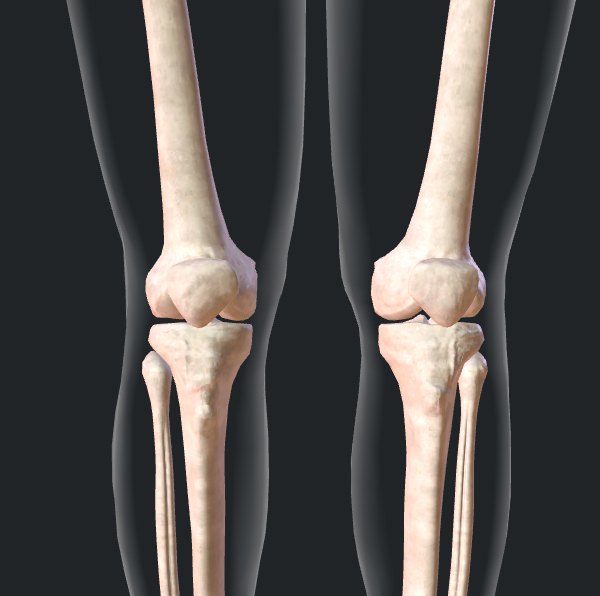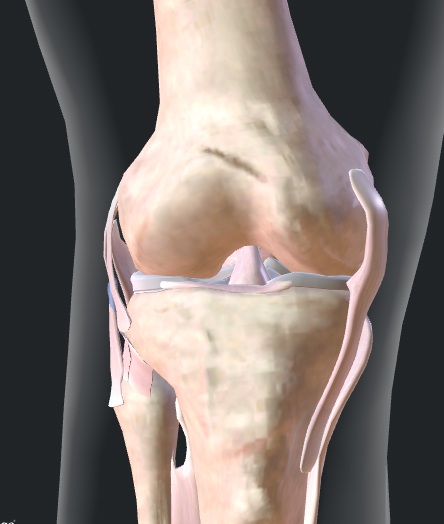
Patient Education: Knee Basics
Education
Knee Basics
The knee is the largest joint in the body and plays a central role in weight-bearing, walking, running, and nearly all daily activities. It functions as a hinge joint, allowing bending and straightening of the leg, while also providing some rotation and side-to-side stability. The knee supports significant loads during movement, making it vulnerable to injury and degeneration over time.
Understanding the basic structure of the knee helps explain how injuries occur and the goals of both surgical and non-surgical treatments.
Bony Anatomy
The knee is made up of three main bones:
The femur (thighbone)
The tibia (shinbone)
The patella (kneecap)
These bones form two primary joints:
The tibiofemoral joint between the femur and tibia, which bears most of the body’s weight.
The patellofemoral joint between the kneecap and the femur, which helps with knee extension and absorbs forces during activities like climbing stairs or squatting.
The ends of these bones are covered with smooth cartilage, allowing them to glide against each other with minimal friction. Maintaining healthy cartilage is important for knee function and helps prevent arthritis.
Soft Tissue Stabilizers
The knee depends on several soft tissue structures for stability and function:
Ligaments connect bone to bone and prevent excessive movement. The four main ligaments in the knee are:
Anterior cruciate ligament (ACL): Prevents the tibia from sliding forward.
Posterior cruciate ligament (PCL): Prevents the tibia from sliding backward.
Medial collateral ligament (MCL): Stabilizes the inner side of the knee.
Lateral collateral ligament (LCL): Stabilizes the outer side of the knee.
Meniscus: The medial and lateral menisci are two C-shaped cartilage structures that sit between the femur and tibia. They act as shock absorbers, distribute load, and help stabilize the joint.
Joint capsule and surrounding soft tissue: These structures help contain the joint and provide additional support.
Together, these tissues maintain proper alignment and allow smooth, controlled knee motion.
Muscle Support
Strong muscles surrounding the knee play a major role in its stability and function:
Quadriceps: The muscles at the front of the thigh, responsible for straightening the knee.
Hamstrings: The muscles at the back of the thigh, which bend the knee and assist in stabilizing the joint.
Calf muscles: Contribute to knee flexion and ankle stability.
Balanced strength and flexibility in these muscle groups are important for knee health and injury prevention.
Why Alignment and Mechanics Matter
The knee’s function depends heavily on proper alignment and load distribution. Malalignment — such as knock-knees (valgus) or bow-legs (varus) — can place uneven stress on the joint, leading to cartilage wear, ligament strain, or meniscus damage over time.
Issues like meniscus tears, ligament injuries, and arthritis often develop or worsen due to changes in knee mechanics. Understanding these relationships is key to both prevention and treatment.
Common Knee Conditions
Several common problems can affect the knee:
Meniscus tears: Damage to the cushioning cartilage between the femur and tibia.
Ligament injuries (ACL, MCL, etc.): Sprains or tears that compromise knee stability.
Patellar instability: Misalignment or instability of the kneecap.
Cartilage damage and arthritis: Wear of the smooth cartilage lining the joint, leading to pain and stiffness.
Alignment issues: Problems with bone positioning that can contribute to pain or increase the risk of injury.
Many of these conditions can be managed with physical therapy, activity modification, or surgical procedures aimed at restoring alignment and stability.
Conclusion
The knee is a complex joint that balances strength, stability, and mobility. Understanding its basic anatomy and function can help you make informed decisions about injury prevention, treatment options, and recovery strategies.
If you’re experiencing knee pain, instability, or have concerns about knee health, contact our office for a full evaluation and personalized care plan.



